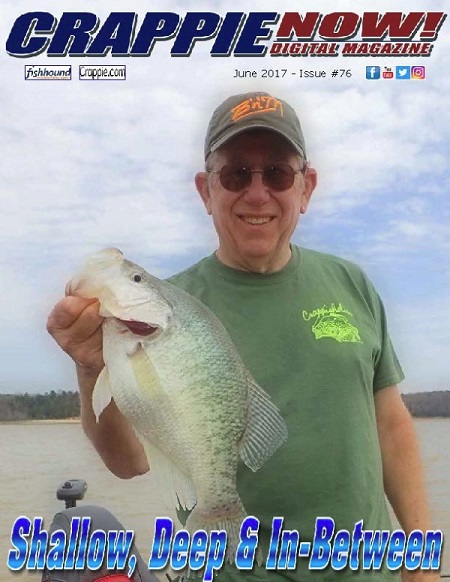
Crappie fishing continues to evolve as more techniques are established for special situations. Steve Brown, a tournament fisherman from Alabama and sponsored by MidSouth Tackle, Road Runner and Tru-Turn hooks, says he uses a technique to get his bait where he needs it, deep in the brush.
“This isn’t a cure-all technique,” says Brown. “but sometimes when we are spider rigging a brushpile it’s too difficult to keep our baits from hanging. Multiple rods hung can be a mess. We often switch to one pole and drop-shot our bait.”
Brown says along with fewer hang-ups, not spooking the crappie is very important. Pulling baits loose from hangups on limbs can spook other crappie in the brushpile. A good spot can be ruined.
The System
“We start by trying to pick the crappie off the top by spider rigging multiple poles. We might catch those fish and pull some up from the brush. However, this doesn’t work in all situations because the fish just won’t come out to take the baits.
“After we spider rig it and present our baits like we want, we will switch to one pole and take a few minutes to jig the brushpile. We use a drop-shot to get baits down through the limbs. We’ve learned that it’s not unusual that the biggest crappie from the spot will come from deep in the cover.”
Setup is easy. Brown finds the spot he wants to fish and usually marks it with a buoy keeping it off the cover so it won’t be in the way. He goes into the wind for better boat control. He carefully fishes by spider rigging the spot making sure to hit all areas of the brush or bed. Then he switches to the drop-shot rig.
Brown’s drop-shot setup includes a Crappie Maxx Pro Series IM-8, 10-foot rod. On bottom is a 1/2-ounce bell sinker. A #1/0 VMC hook is tied 20 inches up from the sinker using a small tag line.
“The 1/2-ounce sinker is good to about 24 feet. It allows me to feel the brush and bottom. I drop it until I feel something. If I don’t hit cover I can move it around until I feel it. I use 10-pound braid because it is more sensitive. It’s the best line for “feel” and it’s tough. Some prefer fluorocarbon but that’s probably just a personal preference.”
“A sensitive rod isn’t an option, it’s a must-have. Fishing stumps, laydowns and deep brush means you have to feel everything including the cover and bites.”
Brown says the rig is primarily to use in places where hangups are a problem. He has used two hooks but says that defeats the purpose of the rig. A fish will immediately run when he is hooked so another hook means you’ll get hung and lose the fish.
“The technique is basically a secondary way to fish and works well with our spider rigging. We spider rig and then use the drop-shot to penetrate the cover. We’ve learned it really helps getting to spooky fish that stay buried in the brush.”
“I usually drop it until it hits bottom or something else. Then work it up as needed. Here on the Alabama River we are likely to pull out a 2 or 2.5-pounder.”
Brown says patience is very important. The bait gets in the strike zone it’s best to leave it there a while to give the fish time to bite. He uses a minnow with the good hook but adding color is okay on some days. He prefers a small-bodied plastic bait when tipping with a minnow.
“I learned this technique from an older gentleman I know. It has worked well for me. I’m sure other fishermen can find situations when the drop-shot will help them reach more crappie.”
Final Comments
Drop-shot rigs have been used for years for crappie (original Kentucky Lake rig) but their specific use for a follow-up tactic after spider rigging is not common. It’s easy to rig a rod just for this tactic, use it for a few minutes on a brushpile, and move on. Give it a try.
Read more articles and tips in the June issue CrappieNow Digital Magazine www.crappienow.com.
